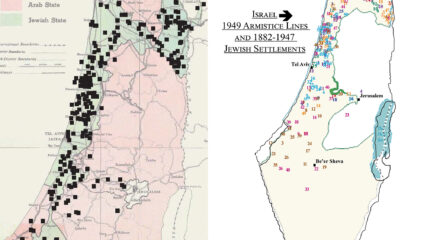July 25, 2023
July 25, 2023 Economist Paul Rivlin of the Moshe Dayan Center and entrepreneur Moran Mizrahi, co-founder and COO of fintech startup Rebillia Platform, speak with CIE Vice President Tal Grinfas-David about the history of Israel’s...
January 8, 2020
The Leviathan natural gas field has finally begun production, after long delays that pushed its start date to the last day of 2019. Flowing from undersea deposits located eighty miles off Israel’s coast, supplies will henceforth pass through processing facilities on the Leviathan rig constructed six miles offshore, then reach the mainland at the village of Dor and enter a gas grid that runs the length and breadth of the country.
April 24, 2019
The discovery of rich fields of natural gas beneath the eastern Mediterranean Sea has given traditionally resource-poor Israel the chance to supply its own energy needs, help wean the European Union off its dependence on Russian energy, and build closer economic and diplomatic ties with Egypt, Jordan, Cyprus, Greece and even the Palestinian Authority. But Israel only has a quarter-century or so to make the most of its newfound energy wealth.
January 20, 1939
A description details the economic devastation caused by the 1936-1939 Arab disturbances in Palestine to the majority rural population. This followed the annually poor crop yields of the early 1930s, and the vast rural wreckage caused by WWI.
December 27, 2019
Yohanan Plesner, President of the Israel Democracy Institute and Prof. Eugene Kandel, CEO Start-Up Nation Central, open the two day conference, welcoming senior executives from the public and private sectors. They've come together to work on a long-term vision for Israel’s economy and for addressing the market’s core issues.
December 11, 2019
The Middle East is among the world’s richest regions in natural resources, but despite the Persian Gulf’s ostentatious oil wealth, as a whole, the region teeters on the economic precipice. East Asia, South Asia, and even Latin America—once peers in business and development—have left the Middle East in the dust. Rather than embark on slow and steady growth, Middle Eastern economies remain trapped by boom-and-bust cycles of economic development, often a case of two steps forward, two steps back.
January 6, 2019
Israel has solved its water crisis! That’s a typical headline about Israel’s world-leading smart water management and advanced water technology. As I sipped freshly desalinated Mediterranean water at the world’s largest seawater desalination plant, the brilliance of Israel’s many-pronged approach was as clear as the H2O in my paper cup. But if residents, farmers and tourists in the Holy Land never worry about the tap running dry, that’s only because Israel invests huge amounts of money and brainpower to stay one step ahead of a worsening worldwide water crisis.
April 2, 2018
Though written in May 2017, Paul Rivlin, a Moshe Dayan Center researcher analyzes a rich trove of data to analyze the Gaza Strip's troubling economic character. Five major reasons are enumerated for its dilemmas: absence of investment, extraordinary high unemployment, a very young population, inability of goods and services to go in and out of the strip, and Hamas's stranglehold on taxation and spending.
1991
Kenneth W. Stein, “One Hundred Years of Social Change: The Creation of the Palestinian Refugee Problem,” in Laurence Silberstein (ed.), New Perspectives on Israeli History: The Early Years of the State, New York University Press,...
1932
Primary sources, reputable scholarship and archival materials collectively show major communal (Arab-Jewish) socio-economic separation, factors that foreshadowed geo-spatial partition.
November 18, 1931
An invaluable glimpse at Palestine's population: gaping socio-economic distances and vast communal differences between Muslims, Christians and Jews that set the strong preferences for separation of the populations.





